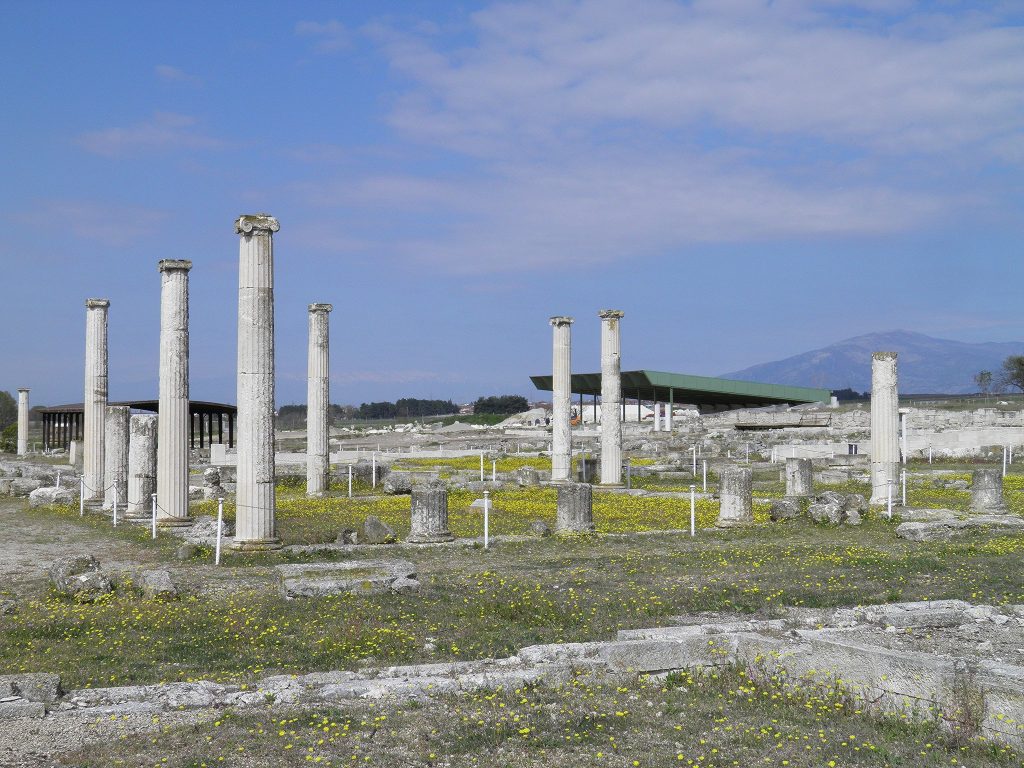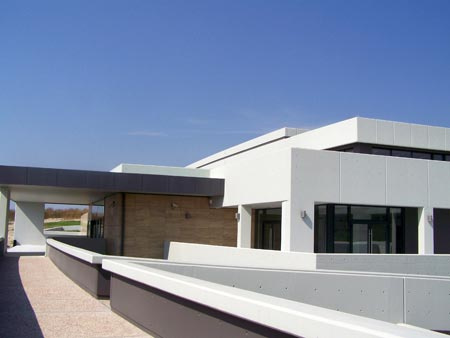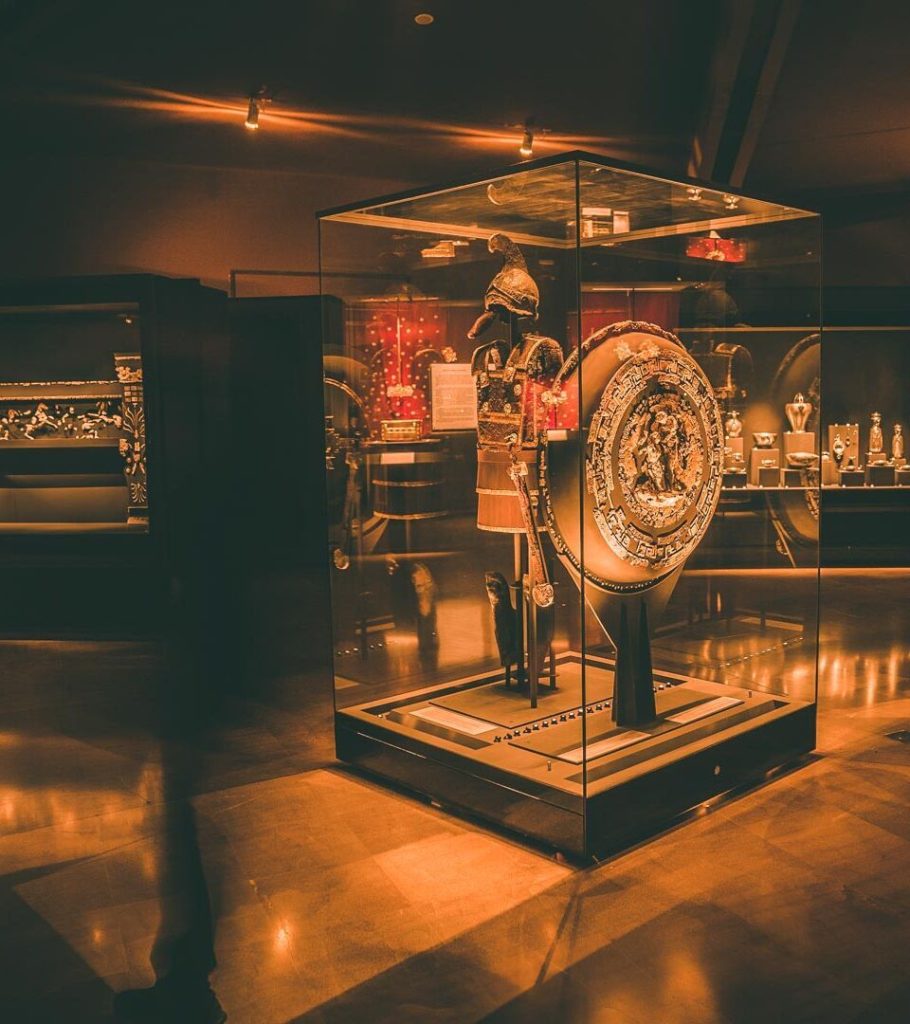Pella - Vergina - Edessa Private Tour
Estimated Duration
8 Hours
Estimated Distance
230 Km

Pella, ancient city, Greece
Pella, ancient capital of King Archelaus of Macedonia at the end of the 5th century BC and birthplace of Alexander the Great. The city lay in northern Greece, about 24 miles (39 km) northwest of Thessaloníki. Originally known as Bounomos, the city developed rapidly under Philip II, but, after the defeat of the last Macedonian king by the Romans (168 BC), it became a small provincial town.
The site of Pella has long been known. Excavations there by the Greek Archaeological Service begun in 1957 revealed large, well-built houses with colonnaded courts and rooms with mosaic floors portraying such scenes as a lion hunt and Dionysus riding a panther. These mosaics are made with small natural pebbles of various colours, carefully matched and laid, and are masterpieces of their kind. They date from the late 4th century BC. Excavations revealed the town to be laid out on a rectangular grid plan with streets more than 30 feet (10 m) wide. Under the streets are terra-cotta pipes for distributing fresh water.

Archaeological Museum of Pella
The museum of Pella is located in the northeastern part of the archaeological site, in the immediate vicinity of the modern settlement of Pella to the east. In the museum, where the visitor ends up after his tour of the archaeological site, he can reconstruct the archaeological data provided by the monuments and understand the various aspects of everyday and public life in the Macedonian capital.The visitor is greeted in the exhibition area by two important findings of Pella and the Macedonian area in general, related to Alexander III, the great historical personality of the Greeks, who was born and grew up in Pella: a marble head that is considered a portrait of Alexander III and a marble statuette, which depicts him with characteristic elements of the god Pan.

Edessa Waterfalls
The famed Edessa waterfalls are probably the best known in Greece and definitely the major attraction in the city of Edessa. Edessa is the capital of Pella, located in the Prefecture of Central Macedonia in Northern Greece and is home to the largest waterfalls in the Balkans. It is a city defined by water, therefore is known as the “City of Waters”.
The waterfalls are said to have been formed in the 14th century, after a major geological phenomenon. Till then, the main volume of water coming from Edessaios River, was collected in a small basin in the west side of the city, but due to that geological phenomenon the water changed course and crossed the city forming these spectacular waterfalls.
There is a double waterfall, the so-called Twin Waterfall, and a single, 70-meter waterfall known as Karanos. Both waterfalls are located in a park, in the center of the city and are surrounded by lots of trees and nature. The park spreads over an area of over 100,000 sq m and apart from the waterfall, has some interesting buildings to see, such as the Open-Air Water Museum and the Aquarium.
The waterfalls are easily accessible with plenty of overlooks and stairs for getting decent views of its main drop as well as getting behind the falls. At a lower part of the Edessa waterfalls, you will find a cave with a small entrance fee, which is of great geological value. At the very top of the Edessa Waterfalls, part of the stream has been diverted and an attractive garden has been formed, filled with mini waterfalls, footbridges and lots of flowers. Since 2003, the waterfalls are flood lit at night and look spectacular.
The area of the falls wasn’t accessible till 1942 because of the steep slopes and the dense vegetation. After World War II, the municipality of Edessa recruited collaborators and gardeners to redevelop and highlight the area. There is a free parking in front of the Edessa waterfall park and the entrance to the park is free. If you want to see the full power of the waterfall wintertime or early spring should be a perfect period.

Walls of Loggos
The ancient city of Edessa consisted of two parts: the acropolis high on the rock (where the modern town is) and the lower city at the foot of the rock. The lower city which is named Loggos is the only part of the ancient and medieval city that is preserved to some degree until today.
Edessa developed in the Hellenistic and the Roman period. Its fortification (both in the acropolis and in the lower city) was reconstructed in the 3rd century when various barbarians (Goths and others) started to raid the southern Balkans.
The acropolis, known as the castle of Vodena has been one of the mightiest castles in Macedonia.
The last reinforcement of the walls of Loggos took place in the 5th century (when the Huns were pillaging mainland Greece) or the 6th century (the latest). In the 6th century or the beginning of the 7th century Loggos was abandoned either because of a natural disaster (flood or earthquake) or because its position was vulnerable in a period of frequent raids by Avars and Slavs. The population moved to the acropolis and the area on the rock around it forming a typical medieval fortress-state.
Edessa was captured by the Ottomans in 1385 and the castle was severely damaged. The final destruction came in 1395 after a strong earthquake that destroyed completely the acropolis and the medieval city.

Vergina
The site containing the tombs of Philip II and other members of the great Macedonian dynasty is a Unesco World Heritage Monument and one of the most important archaeological discoveries of the 20th century
The ancient site of Aigai (or ‘goats’), the curiously named first capital of the kingdom of Macedon, lies on the southwest edge of the plain of Macedonia in northern Greece, in the foothills of Mt Pieria. Although there are open-air ruins, you have come here to see the extraordinary subterranean museum of Vergina and the tombs of Philip II (father of Alexander the Great) and other family members of the great Macedonian dynasty.
You enter the raised mound, or tumulus, through an ominously dark passage, leaving daylight behind and emerging in an open circular space illuminating some of the most extraordinary finds ever discovered. You feel a bit like archaeologist Manolis Andronikos when he unearthed treasures emblazoned with the golden star of Macedon and knew he had stumbled upon the untouched tomb of Philip II.

